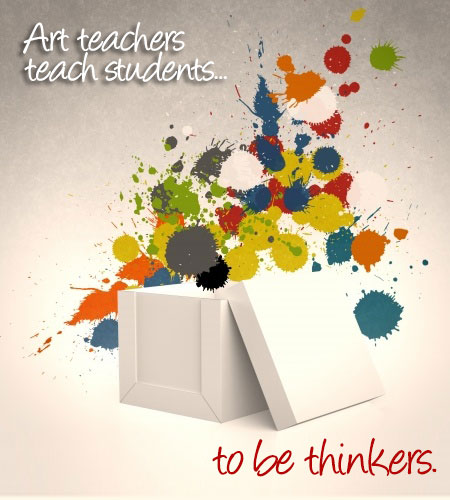Blog
Prompt #19
Non Representational Paper College
- Create a piece of artwork that is not representational.
- It must focus on shape (positive and negative) and composition.( **see non-objective compositional arrangements below)
- Problem solving creatively: Surprise Element
- This is a blind student project!!!! Do a sample for your self so you know what is going on, but do not show the students the final product.
- Do not tell students the whole project ahead of time. Have them do each step without knowing the next step.
Definitions:
- Non-Objective Art – Art that is not representational, containing no recognizable figures or objects. Originally used to describe a type of abstract art that eliminated the idea of depth and concentrated on composing a harmonious arrangement of grids, shapes, and color.
- Paper Work/College: Paper
work is very often considered to be, within the textile world at least, an
integral part of the process of both textile design and textile artwork. In
many cases the paper work is the first stage of a fairly lengthy process
whereby ideas are first formulated, often changed and manipulated before being
transferred to another medium, whether that be textile printing, weaving,
quilting, embroidery, or indeed fine art painting. However, it should be noted
that paper collage is in its own right an art form and should not be seen as a
mere process towards another medium or idea.
Non-Objective Compositional Arrangements:
1. S or Z Composition: usually breaks the space up in a ‘s’ or ‘z’ shape (backwards or forwards or sideways).
2. Cruciform composition: breaks the space up in the form of a cross.
3. Radial compositions:have an obvious spoke-like design. All lines should be broken, irregular or intercepted.
4. L or Rectangular compositions: have a large mass with a lateral plane (also look at landscape collages p.115 in Collage Techniques)
5. Diagonal line composition: requires verticals or opposing slanted lines.
6.The pattern composition: is possibly the most ideal and most difficult of schemes. You should have more positive areas than negative and it can be in many different combinations, such as;
7. Horizontal compositions: contain a pattern that repeats across the plain of the artwork.
8.Vertical compositions: contain a pattern that repeats up and down in the plain of the artwork.
9.Overlapping Frames: is a pattern that overlaps or alternates like a checkerboard (Piet Mondrian and Frank Lloyd Wright).
10.Constellation patterned compositions: are usually used in wallpaper design in which a cluster of images, small to large, make up the pattern.
**See document for visual aids on compositional arrangements:
1.Choose
a color or black background.
-In this example I used green and black
2.Rip
or cut the foreground color paper and arrange it to make a non-objective
composition
-I choose to cut.
-It can be your choice as the teacher, or you can leave it to the individual students.
3.Students Choose
other 2 smaller pieces of papers (textured/patterned)
-Use origami paper, rice paper, tissue paper, patterned paper
4. Rip or cut the textured/patterned paper, add to the non-objective composition, and arrange pieces.
6.Problem solving creatively: Surprise Element
-You go by each student and give them a contrasting pattern/texture and color
-Samples from wall paper books work great.
-The student has to work the element into their existing composition work.
7.Once
arranged, take a photo
8. Start gluing the pieces (be mindful of where glue gets), things may change.
9.Sew
in lines to enhance your principals of design
10.Shade
in value (color pencils) to enhance your principals of design
Student Examples:
Elements & Principles of Art Design covered:
Color,
Shape, Space, Texture, Line, Value
Balance,
Emphasis, Contrast, Unity, Rhythm
https://docs.google.com/presentation/d/1KMXD7LBjhRM2Qlz4TsU389YI4wZmy5L-AtTVxFWANF0/edit?usp=sharing





































